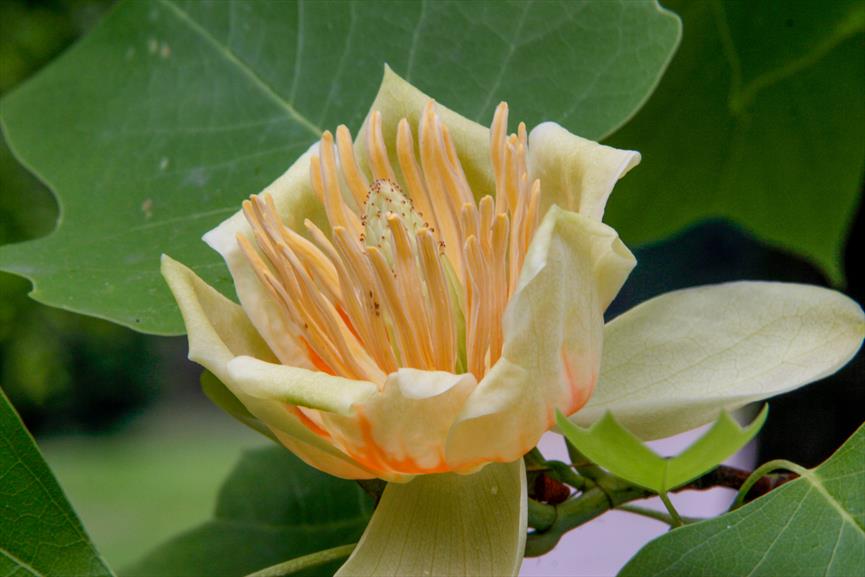Chinese Tulip-tree
Liriodendron chinense
Magnolia family (Magnoliaceae)
In the Yangtze valley
To the layman the ‘tulip tree’ is synonymous with ‘magnolia’. The tulip tree belongs to the genus Liriodendron. This name comes from the Greek and means ‘lily tree’. Characteristic of the tulip tree is its leaf, which is two lobed with a truncated top. This species is often planted as an ornamental because of its pretty leaves.
In addition to the American species, Liriodendron tulipifera, a second species, L. chinense, occurs in China. This was collected for the first time in 1875 and initially considered to be a variety of L. tulipifera. Although the leaves these species certainly look very similar this didn’t apply to the young leaves. With L. chinense they are initially a purple colour whilst those of the American species are always green. Moreover the flowers are different: L. chinense has smaller, light orange-yellow flowers that are more open and have a dark orange inside.
Some 10 to 20 million years ago the genus Liriodendron grew across the whole of the northern hemisphere. During cold periods they migrated further south and disappeared from Europe. The areas occupied by the two remaining species were until 13 million years ago connected, but now they are now completely separated.
Read more.... »Details
| Description: | Tree, up to 40 m, 1 m in diameter. |
|---|---|
| Distributions: | China, vietnam |
| Habitat: | Tropical broad-leaved forests, river valleys and montane forests on alkaline rocks and deep, well-drained, loamy and fertile soil on slopes of mountains. |
| Year cycle: | Perennial (polycarpic decidous) |
| Hardiness: | -4 - 5 f (hardy - very cold winter) |
| Flowering period: | Mei |
| Flower color: | Yellow, green, orange |
| Notes on flowers: | Yellowish green, orange-yellow. |
| At its best: | Mei |
